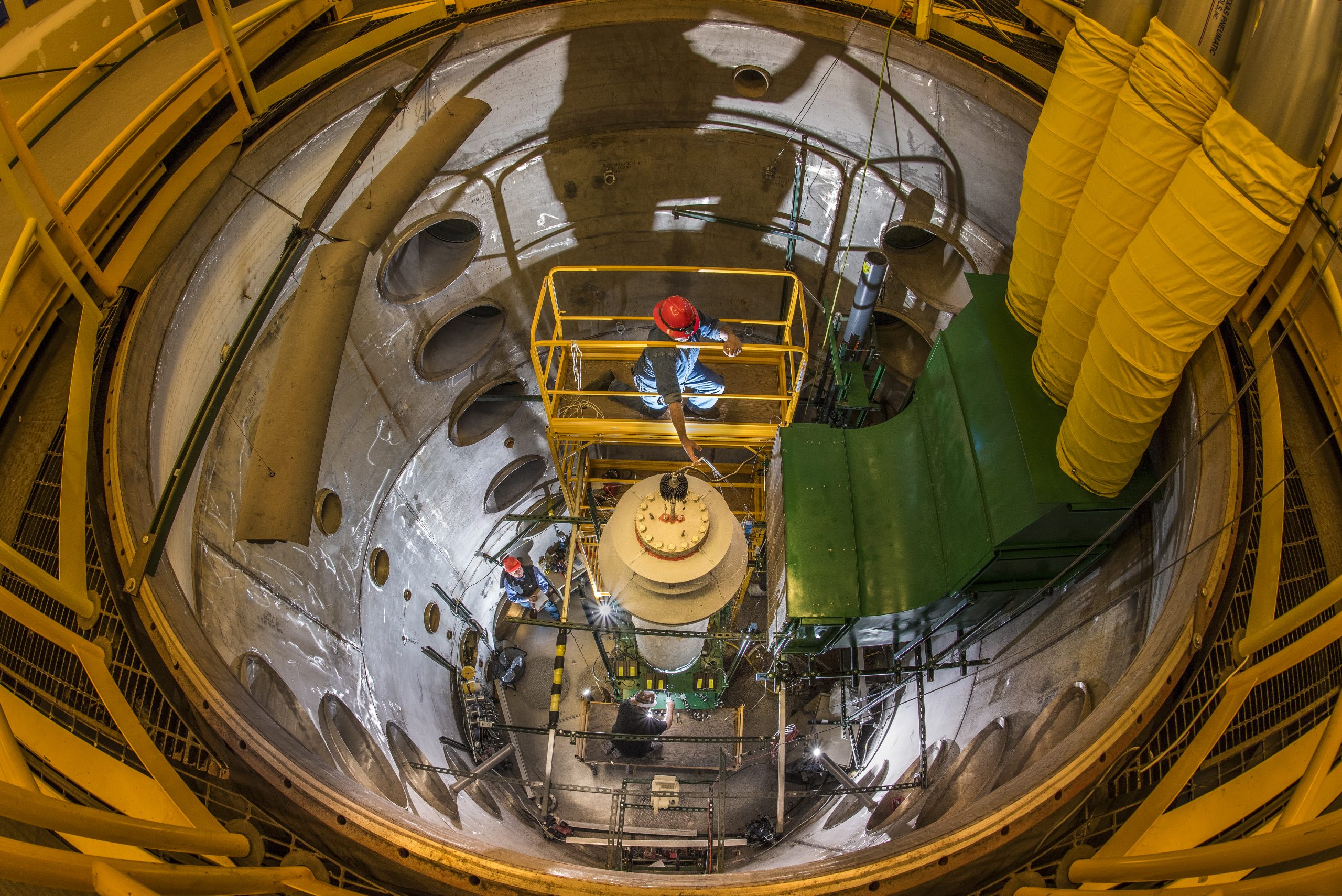ALBUQUERQUE, N.M. — Sandia National Laboratories researchers have built a scaled test assembly that mimics a dry cask storage container for spent nuclear fuel to study how fuel temperatures change during storage and how the fuel’s peak temperatures affect the integrity of the metal cladding surrounding the spent fuel.

Regulators could use the data to help verify computer simulations that show whether nuclear power utilities are complying with regulations that specify how much heat a dry cask can safely handle.
Nationwide, nuclear power plants are running out of room in the cooling pools they use to store spent nuclear fuel when it is removed from the reactor and at its hottest. The United States does not have an operating geologic repository for the permanent disposal of spent nuclear fuel, so many power plants use dry casks that can house spent fuel for up to 60 years as an interim solution that allows them to move groups of fuel rods, or fuel assemblies, out of the pools.
“New cask designs are storing more spent fuel, from 17 pressurized water reactor assemblies up to 37 now,” said Samuel Durbin, a Sandia mechanical engineer. “They are increasing the pressure in the casks to increase convection, which transfers the heat out to the environment while the cask shields the radiation.”
Durbin said the additional storage capacity of modern dry casks provides cost savings to operators and utility customers, but new data and computer models were needed to help verify existing computer modeling predictions that the fuel wouldn’t be too hot, under any conditions, to affect the integrity of the fuel cladding.
The inaccessibility of the cask interior and high radioactivity of the spent fuel make it difficult to directly monitor the temperature, but Sandia’s dry-cask simulator is providing answers on how spent fuel will age in the newly designed dry-casks and how hot the spent fuel and cladding in the casks will become.
Simulating decades of temperature measurement inside a dry cask
During a three-year project for the DOE and the Nuclear Regulatory Commission, Durbin and Greg Koenig, an advanced nuclear fuel cycle technologist, led a Sandia team that designed and constructed a dry-cask simulator for boiling water reactor assemblies and ran tests to measure the highest temperatures the cladding inside the canister would be exposed to under a variety of set conditions during decades of storage. No radioactive materials were used in the testing.
“The simulator is fitted with more than 750 data-gathering instruments, and about 700 of those are thermocouples, or devices that measure temperature,” Koenig said. “We have special programming software that takes user parameters and determines the hottest temperature within the simulation. We control the power and pressure and can have many different decay heats.”
Everything inside the cask is built to closely simulate the way it would be for a utility. The only difference is that Sandia’s cask simulator uses electrical heater rods the same length and diameter of spent fuel rods instead of actual spent fuel.
“A lot of survivability and degradation issues are driven by the hottest part of the fuel,” Durbin said. “By modeling these peak temperatures, we are providing knowledge about the fuel, which is important because a lot of phenomena are tied to the temperature the cladding sees while it’s sitting inside the dry cask. So, the better you know what temperatures the fuel will reach during a set of conditions, the better you can predict the integrity of the fuel and the cask.”
The team used the dry-cask simulator to measure temperatures for both above- and below-ground storage systems. For below-ground storage, they positioned a wind machine over the cask to replicate crosswinds between 0 and 12 mph.
“Our simulator is very heavily instrumented so we can get a lot of quality information about the fuel,” Durbin said. “We can take a known condition, collect data for it, and then model it.”
Utilities typically evaluate the performance of a dry cask through detailed analytical modeling of the cask’s thermal performance. This analysis is used to demonstrate performance and regulatory compliance before commissioning a new cask, and the Nuclear Regulatory Commission independently verifies the results. The new data from Sandia could help regulators verify the accuracy of the analytical modeling.